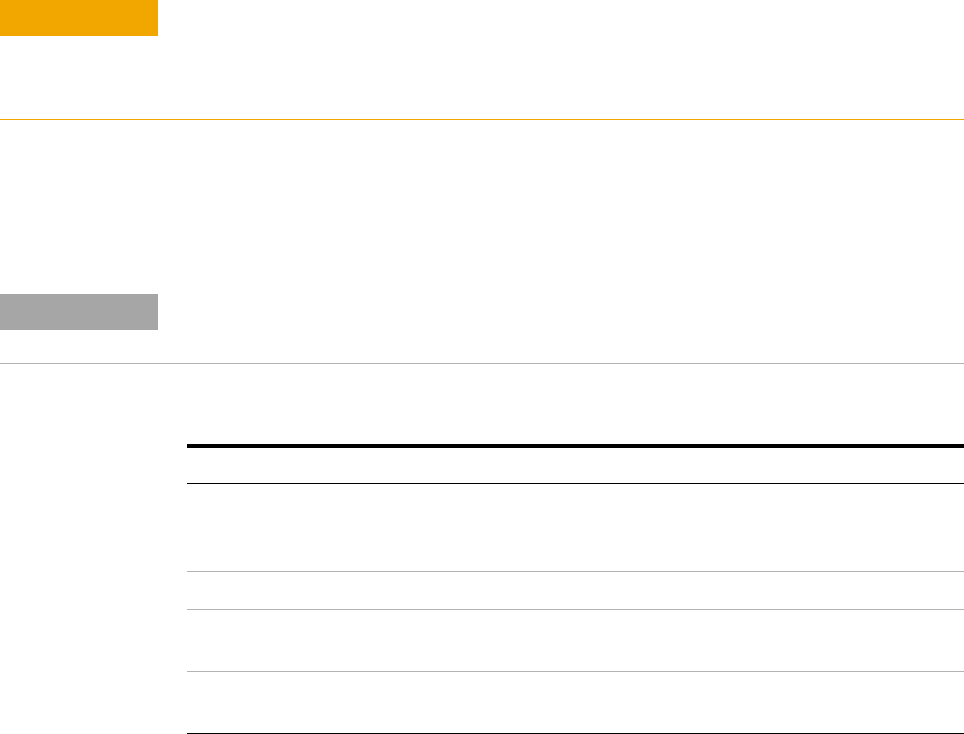User`s guide
Table Of Contents
- Title Page
- Contents
- Getting Started
- Introduction and Measurement
- Phase Noise Basics
- Expanding Your Measurement Experience
- Starting the Measurement Software
- Using the Asset Manager
- Using the Server Hardware Connections to Specify the Source
- Setting GPIB Addresses
- Testing the 8663A Internal/External 10 MHz
- Testing the 8644B Internal/External 10 MHz
- Viewing Markers
- Omitting Spurs
- Displaying the Parameter Summary
- Exporting Measurement Results
- Absolute Measurement Fundamentals
- Absolute Measurement Examples
- Residual Measurement Fundamentals
- What is Residual Noise?
- Assumptions about Residual Phase Noise Measurements
- Calibrating the Measurement
- Measurement Difficulties
- Residual Measurement Examples
- FM Discriminator Fundamentals
- FM Discriminator Measurement Examples
- AM Noise Measurement Fundamentals
- AM Noise Measurement Examples
- Baseband Noise Measurement Examples
- Evaluating Your Measurement Results
- Advanced Software Features
- Reference Graphs and Tables
- Approximate System Noise Floor vs. R Port Signal Level
- Phase Noise Floor and Region of Validity
- Phase Noise Level of Various Agilent Sources
- Increase in Measured Noise as Ref Source Approaches DUT Noise
- Approximate Sensitivity of Delay Line Discriminator
- AM Calibration
- Voltage Controlled Source Tuning Requirements
- Tune Range of VCO for Center Voltage
- Peak Tuning Range Required by Noise Level
- Phase Lock Loop Bandwidth vs. Peak Tuning Range
- Noise Floor Limits Due to Peak Tuning Range
- Tuning Characteristics of Various VCO Source Options
- 8643A Frequency Limits
- 8644B Frequency Limits
- 8664A Frequency Limits
- 8665A Frequency Limits
- 8665B Frequency Limits
- System Specifications
- System Interconnections
- PC Components Installation
- Overview
- Step 1: Uninstall the current version of Agilent Technologies IO libraries
- Step 2: Uninstall all National Instruments products.
- Step 3: Install the National Instruments VXI software.
- Step 4: Install the National Instruments VISA runtime.
- Step 5: Install software for the NI Data Acquisition Software.
- Step 6: Hardware Installation
- Step 7. Finalize National Instruments Software Installation.
- Step 8: System Interconnections
- Step 9: Install Microsoft Visual C++ 2008 Redistributable Package use default settings
- Step 10: Install the Agilent I/O Libraries
- Step 11: Install the E5500 Phase Noise Measurement software.
- Step 12: Asset Configuration
- Step 13: License Key for the Phase Noise Test Set
- Overview
- PC Digitizer Performance Verification
- Preventive Maintenance
- Service, Support, and Safety Information
- Safety and Regulatory Information
- Safety summary
- Equipment Installation
- Environmental conditions
- Before applying power
- Ground the instrument or system
- Fuses and Circuit Breakers
- Maintenance
- Safety symbols and instrument markings
- Regulatory Compliance
- Declaration of Conformity
- Compliance with German noise requirements
- Compliance with Canadian EMC requirements
- Service and Support
- Return Procedure
- Safety and Regulatory Information

FM Discriminator Measurement Examples
10
Agilent E5505A User’s Guide 253
FM Discriminator Measurement using Double-Sided Spur Calibration
Required Equipment
Table 40 shows equipment required for this example in addition to the phase
noise test system and your DUT.
Determining the discriminator (delay line) length
Perform the following steps to determine the minimum delay line length (τ)
Possible to provide an adequate noise to measure the source.
1
Determine the delay necessary to provide a discriminator noise floor that is
below the expected noise level of the DUT. Figure 181 on page 254 shows
the noise floor of the discriminator for given delay times (τ).
2
Determine the length of coax required to provide the necessary delay (τ).
(Eight feet of BNC cable will provide 12 ns of delay for this example.)
3
Determine the loss in the delay line. Verify that the signal source will be
able to provide a power level at the output of the delay line of between +5
and +17 ICBM. Be sure to take into account an additional 4 to 6 dB of loss in
the power splitter. (The loss across 8 feet of BNC cable specified in this
CAUTION
To prevent damage to the test set’s components, do not apply the input signal to
the signal input connector until the input attenuator (N5500A Option 001) has been
correctly set for the desired configuration, as shown in Ta ble 4 1 . Apply the input
signal when the connection diagram appears.
NOTE
To ensure accurate measurements allow the DUT and measurement equipment to warm
up at least 30 minutes before making the noise measurement.
Table 40 Required Equipment for the FM Discriminator Measurement Example
Equipment Quantity Comments
Signal Generator 1 +19 dBm output level at tested carrier frequency.
Calibrated FM at a 20 kHz rate with 10 kHz Peak
Deviation.
Power Splitter 1 NARDA 30183
Delay Line Delay (or length) adequate to decorrelate source
noise.
Phase Shifter 1
±
180
°
phase shifter at lowest carrier frequency
tested.










